If you are looking for a rifle perfect for long-range prone shooting, this Bergara could be the one! Chris Parkin was very impressed with it...
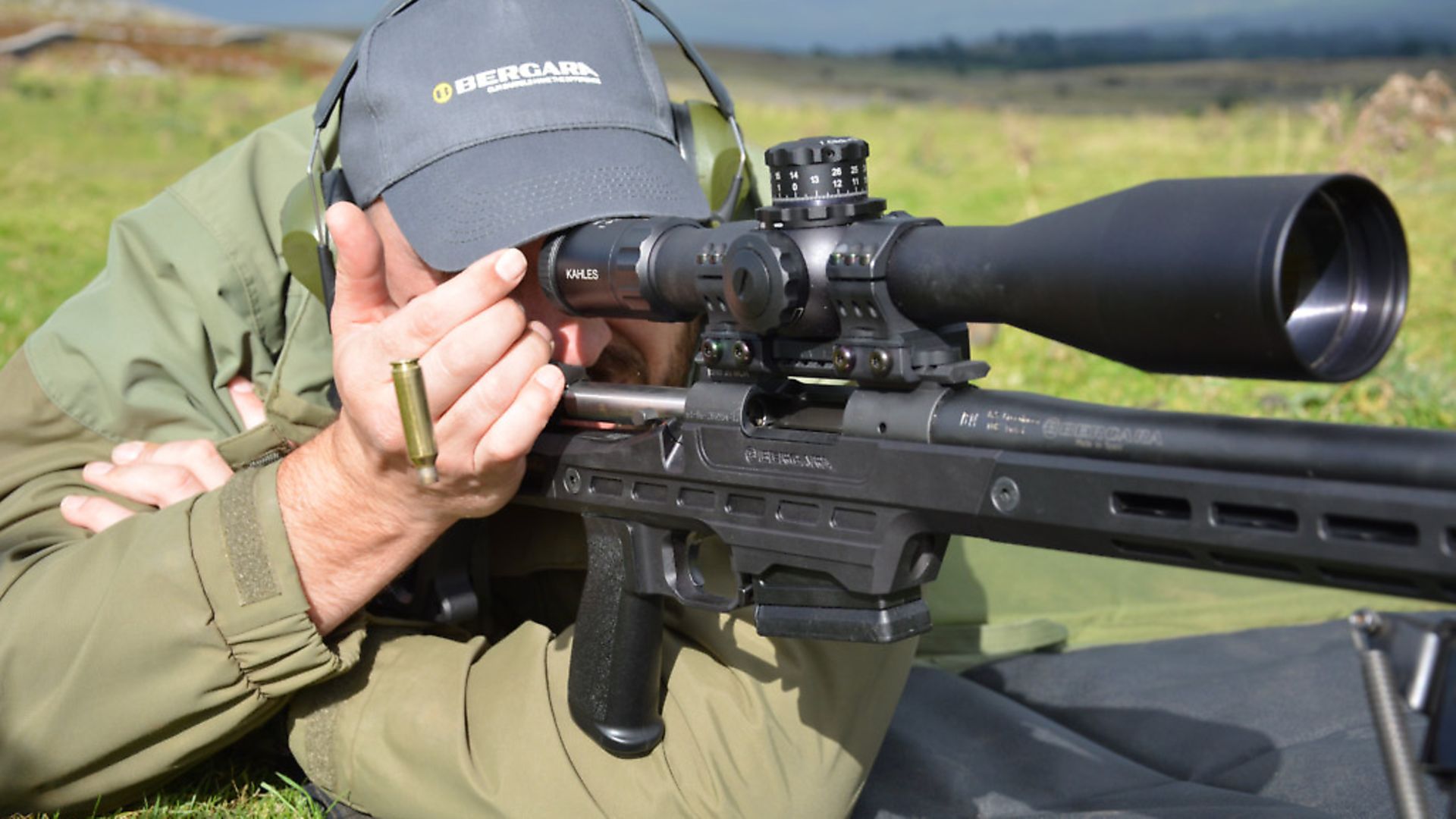 credit: Archant
credit: Archant
PROS: Probably the best of all the chassis for long range prone shooting; I love the adjustability on the stock; Adjustable trigger (mine could have done with two minutes tinkering but at least this is possible); Creedmoor is a beautiful cartridge with no real caveats, like the gun it fuels
CONS: I would personally bed the action tang as I don’t like them floating; I’d love to have seen a folding stock; No left hander
VERDICT: Of all the chassis rifles I have tried in this price bracket, this stands side-by-side with the Tikka at the top. Two minutes on the trigger, a blob of Devcon under the tang, and I would prefer it to the Tikka TAC A1. It’s the kind of fun I could live with long term because I really enjoyed using it
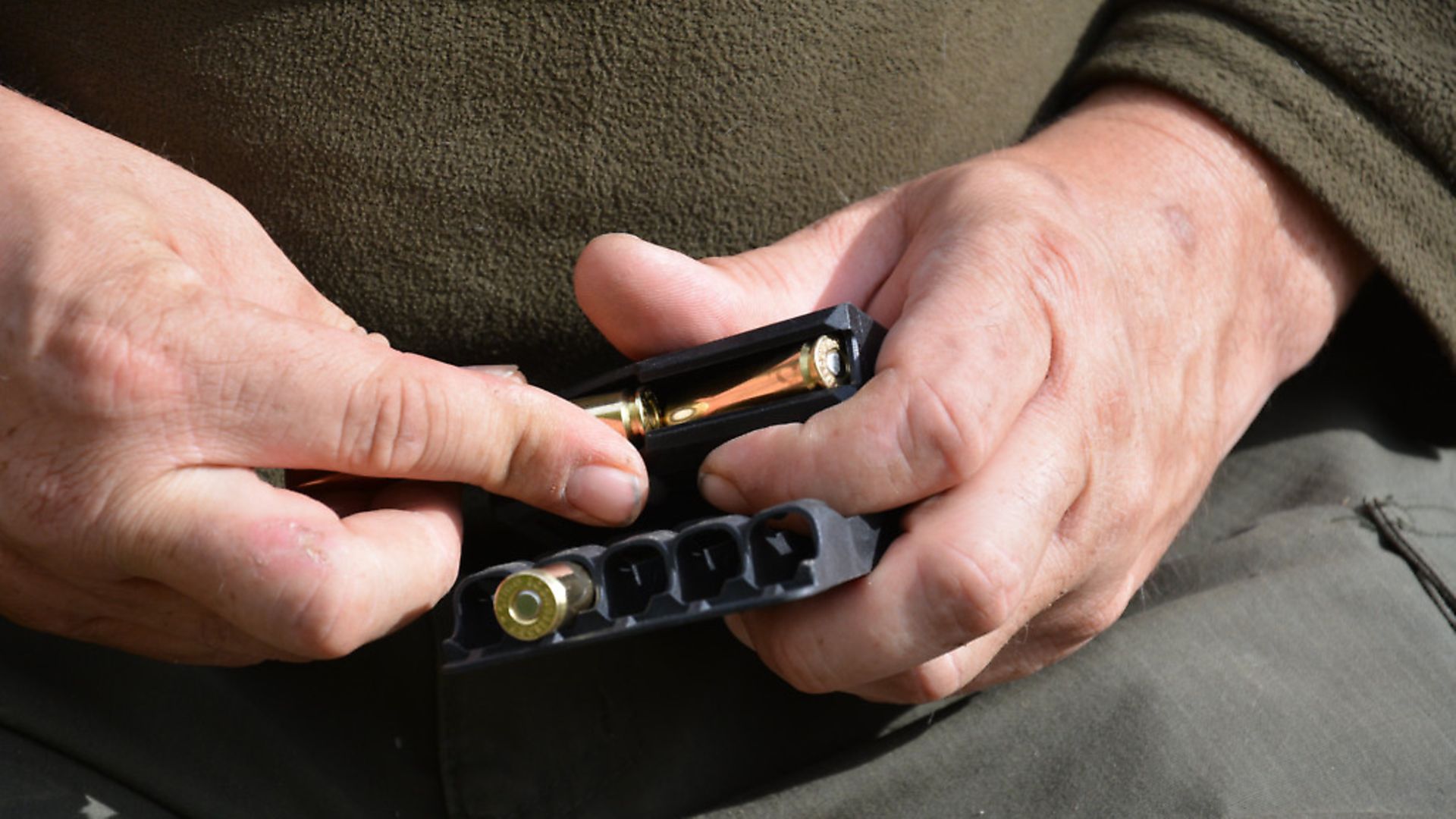 credit: Archant
credit: Archant
TECH SPECS
Overall length: 43.1”/1095mm
Weight: 11.6lbs/5.26kg
Magazine capacity: 5+1 (AICS compatible)
Trigger: Single stage, 900gr (oz.)
Barrel length: 24”/610mm, 1 in 8” twist (200mm) Button Rifled
Stock material: Aluminium chassis, hard anodised black
Length of Pull: 13”/330mm – 14.25”/370mm
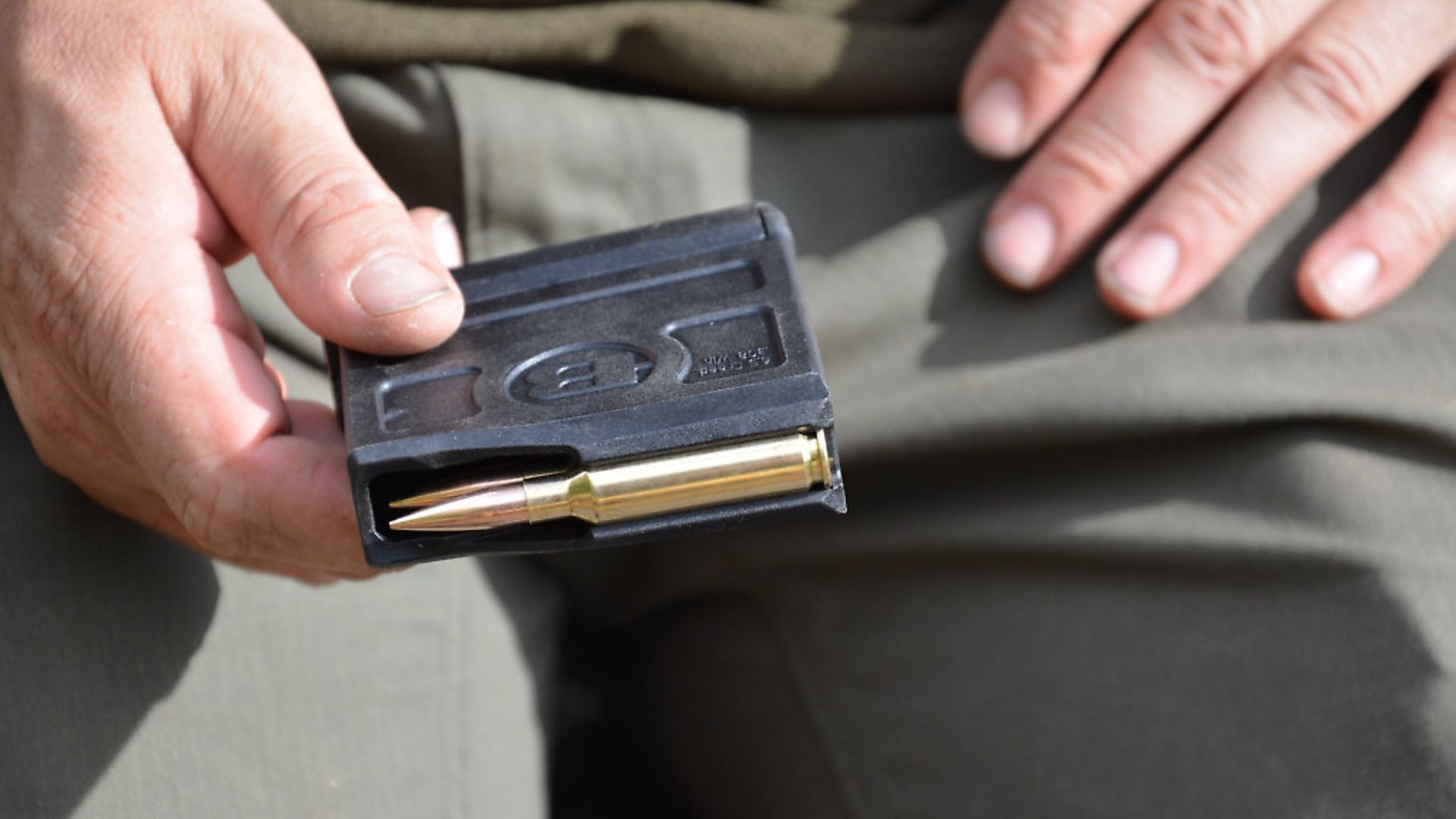 credit: Archant
credit: Archant
RRPs:
Bergara BMP 6.5 Creedmoor - £1,572
Kahles K624i SKMR - £2,550
Hausken JD224 - £370.00
Tier One 20MOA rail - £72
Tier One 34mm Unimount - £265
Norma 130gr 6.5 Creedmoor Ammunition - £TBC
CONTACT
RUAG 01579 362319 www.ruag.co.uk
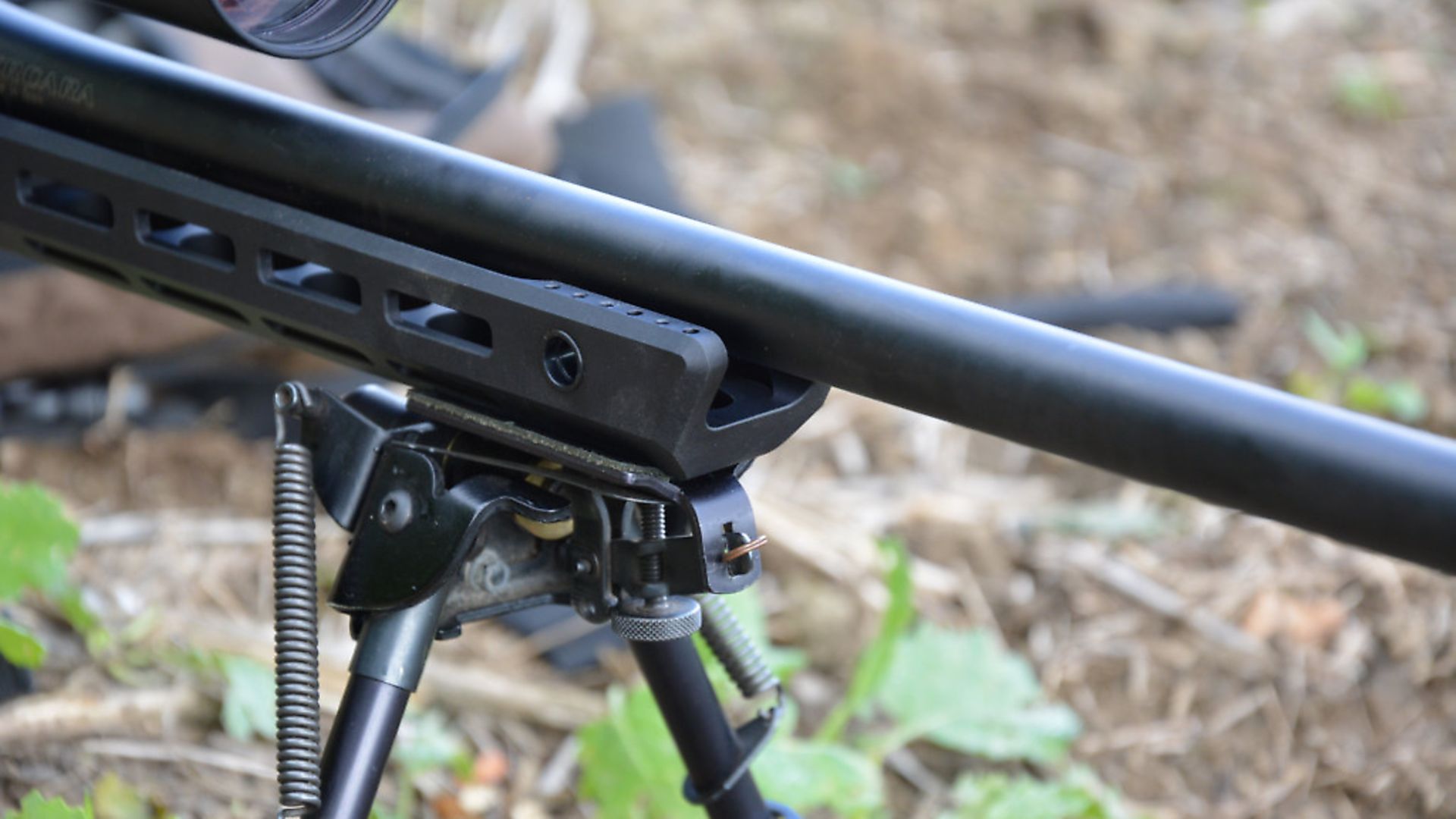 credit: Archant
credit: Archant
IN DEPTH
After shooting a few guns designed to meet the rulebook of a new trend, you soon notice at first glance what is going to impress or disappoint you. It’s 18 months or so since I shot a Bergara, but I’m reminded of the fact that its lightweight sporting barrel steel maintained a group at 400 yards, shot with mercilessly hot steel in non-target oriented .243.
This is my first encounter with the 6.5 Creedmoor too, so to combine these memories of performance with a new calibre that I briefly tried five years ago was rather appealing.
I’m a long-term .260 Remington devotee, which shows similar ballistics to the 6.5mm and, where many apparently ‘new and improved’ cartridges fall down on the functional day-to-day cycling elements within the gun, the Creedmoor was immediately as good as its sales have suggested, so I can’t lay any criticism at its feet.
Bergara first came to me five or six years ago with their barrel making prowess which revolves around the button rifling process. Each blank is straightened, deep bore drilled and internally polished, before the button is drawn through to shape the grooves and lands.
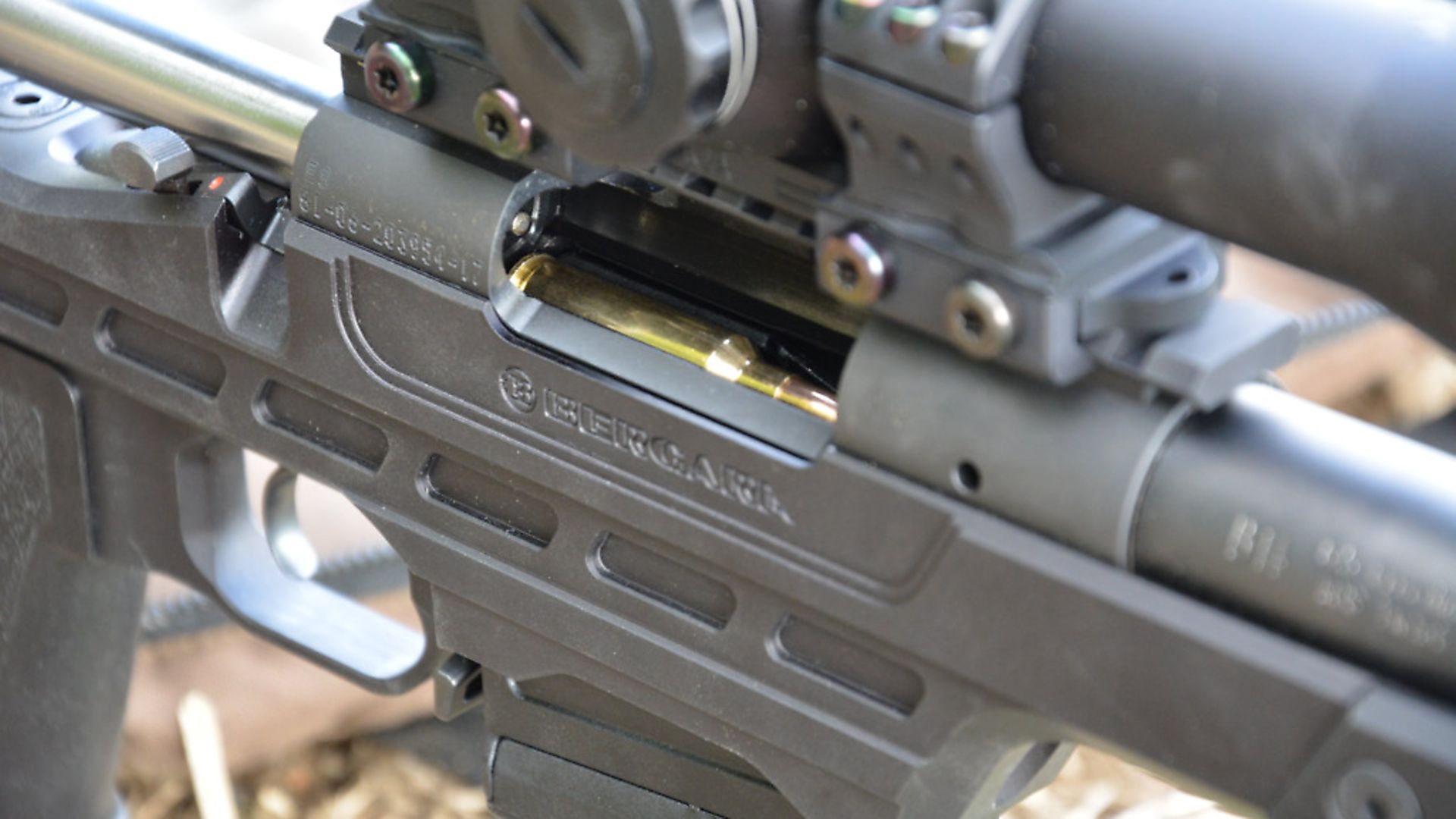 credit: Archant
credit: Archant
This process has shown some excellent barrels on custom guns and on Bergara’s own sporters, with great thermal stability as mentioned, and the external finish of all steel and aluminium components looks to have followed a similarly high standard of workmanship.
The 24”/610mm barrel begins with a smartly executed recessed crown within the 18x1 thread of the muzzle. It flows from 21.2mm diameter in a varmint contour before the chamber reinforce. All the steel is matt blacked and has withstood some carefree handling, being bumped around in off-road vehicles and back and forth off concrete benches by all and sundry.
Yes, this was the very rifle I took home with me after a dealers’ event recently, where it got some serious use on the 600 yard ranges at Diggle. Firstly, I attended to cleaning the gun after several hundred rounds of ammunition had been put down its bore, and was pleased at the ease with which powder fouling baked on for several days cleared up.
 credit: Archant
credit: Archant
Onward to the copper… there was some, unsurprisingly after this somewhat aggressive firing baptism, but that also shifted with less effort than I was expecting before I bore-scoped the barrel and found a tube with pleasing internals on what I can’t help describing as a great-value rifle.
Bergara have obviously followed in the footsteps of the Remington 700 with major design elements, and action dimensions with all stock, magazine, scope mounting and trigger accessories being totally interchangeable. The major difference here is that Bergara did not really need this component conformity; what they supply as standard is of a higher manufacturing and machining quality, and that’s before consideration of the evolved design in those areas where Remington have rather sat on their 55-year-old laurels.
The recoil lug is still sandwiched to the action face by the barrel tenon, but slots within a recess on the action to prevent it from twisting. This is helpful if the gun is to be bedded and later have new or swap barrels added to the conventionally threaded action. The twin-lug bolt push feeds rounds from a single column in the polymer five-shot magazine up the feed ramp and into the chamber, where a claw extractor in the right-hand lug’s face locks onto it combined. This enables forceful primary and secondary extraction after firing the relatively straight-walled case on the Creedmoor.
 credit: Archant
credit: Archant
It has a sprung plunger ejector that shows average levels of enthusiasm, which is more acceptable on a precision rifle from which you want to retain the brass than a true hunting tool that needs to fling it far and wide before a possible emergency reload. Bolt lug abutments are part of the action, rather than the barrel, and although the ‘three rings of steel’ have been bypassed, the bolt nose shows a slight cone to its face that riflesmiths will find simple to accommodate when fitting a new barrel in years to come.
The long raceways down the action guide its passage with smooth machined surfaces, and the well-specified bolt handle length with a knurled teardrop knob won’t overpower the bolt and cause it to jam if closed too abruptly. The rear left side of the receiver has a bolt release catch (which is far easier to operate than the trigger guard style seen of old) before a neatly profiled bolt shroud with a visible and tactile cocked action indicator to its base.
The safety catch is a two-position unit with no bolt locking facility when safe, but it is quiet to use and will roll under the thumb of the firing hand when lifted from the grip and trigger blade. Two pins hold the trigger to the underside of the action where the sears are locked by the safety catch rising alongside.
 credit: Archant
credit: Archant
There was a slight creep felt on the single stage blade, but strip down showed me a unit with modern machining and, thankfully, adjustment screws that were not shrouded in great globs of threadlock, so within two minutes I could cut out the creep for a crisp 900gr/2lb pull weight. Reach to the trigger from the under-slung polymer AR15-style grip on this type of chassis showed the usual short reach, but with good trigger operation this fundamental design attribute becomes far more predictable and comfortable.
When it comes to comfort, Bergara really have thrown the gauntlet down. This aluminium chassis is made in three sections that bolt together semi-permanently, but with great rigidity and a far less complicated strip down procedure than something like the Tikka TAC, which shows multiple interlocking directions and components. The fore-end is a stiff channel with plenty of space around the barrel for cooling and cleaning, and multiple mounting points for accessory rails. A sling stud is supplied for simple bipod mounting, but you could add an underside rail if something like an Atlas is on your to-do list.
The top shows mounting points for a barrel bridge to hold forward-mounted night vision or thermal imagers; they’re not something I’m likely to be using but those few extra seconds on the CNC machine will be of great assistance to some users, so I see no loss to their incorporation. Quick-release stud mounting points are integral on both sides with similar at the rear end of the gun for more complex biathlon-style carry. I prefer a U channel to a tubular fore-end, as a tube forces the scope above the barrel and, although there are many ways to skin this ergonomic cat, there are no definite winners.
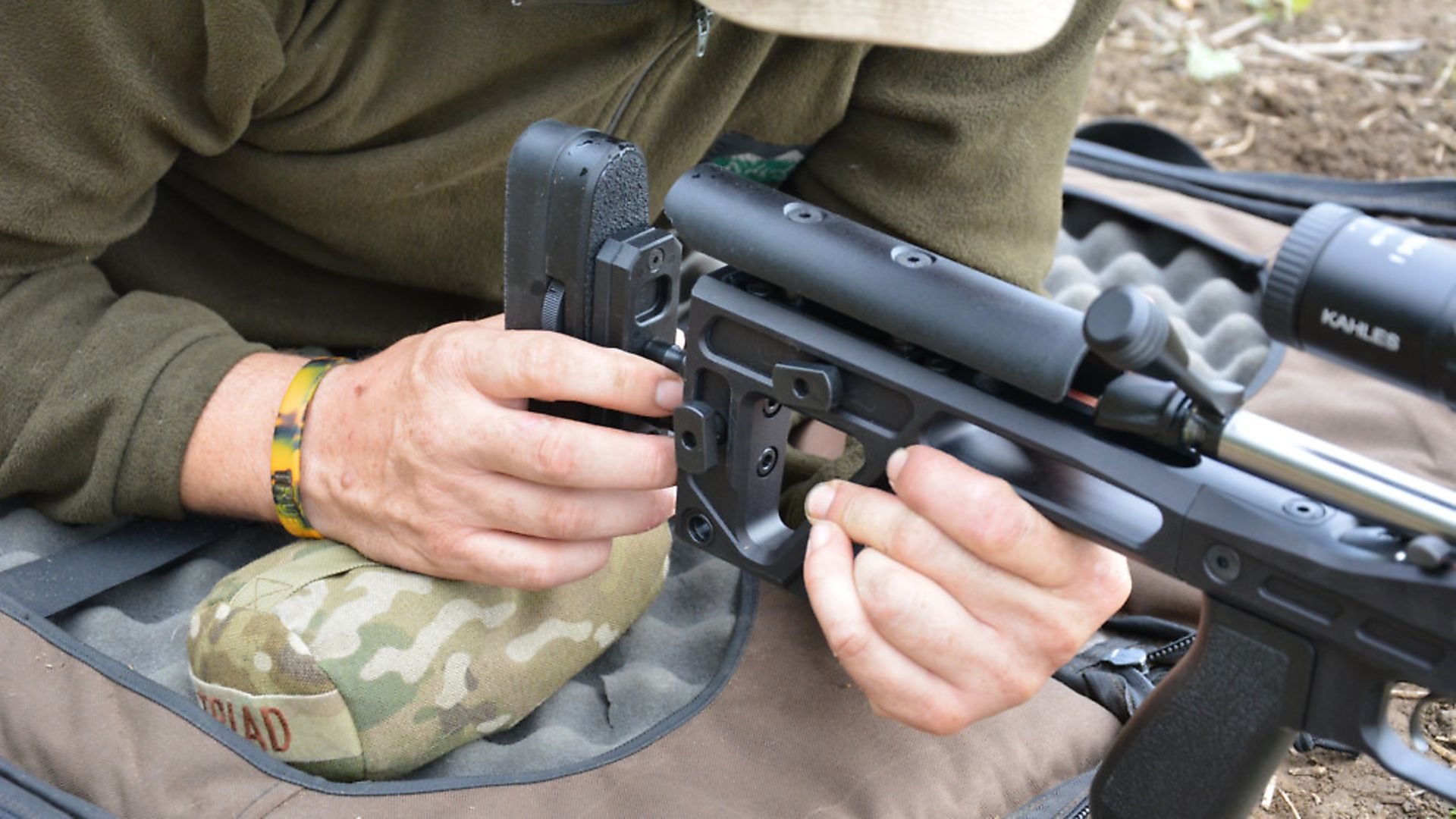 credit: Archant
credit: Archant
Some prefer that design, with a correspondingly high cheekpiece above the borderline, a bolt that retracts underneath it and a recoil pad in line. But, when you compare both designs side by side, you will always be ‘robbing Peter to pay Paul’, so to speak, for correct ergonomic fit to the generally fixed human form. Tubular perhaps suits multi-positional shooting a little better, but this rifle is a long-range prone shooter’s dream, ergonomically speaking, and I don’t say that lightly.
Recoil is linear and presented centrally to a recoil pad that minimises muzzle lift from firing; this rifle is one of the best for tracking your own bullet’s trace onto target, and I have remained capable of seeing with little positional work required to regain any point of aim shift. The small calibre, moderate weight of the gun and minimised force meant the bipod’s rubber feet didn’t even bounce from a bare concrete firing point, and when on grass you could load the bipod to your heart’s content to experiment with long-range vertical shift.
The recoil pad is made from rubber and so welds comfortably into your shoulder pocket without slipping out of position. It is adjustable for vertical height, going far beyond requirements for travel 40mm up and 30mm down from ‘zero’ point in the centre of its base-plate, where a textured surface holds it securely. It also shows full rotational positioning so you can cant it for a final touch of perfection. Physical recoil from the Creedmoor is minimal, but a .308 version will soon show how good this arrangement is for consistent shoulder pressure and long-range elevation control.
 credit: Archant
credit: Archant
Overall length-of-pull is adjustable from 13”/330mm to 15.5”/370mm with thumb-adjustable locking knobs to solidly fasten the twin guide rods. A similar arrangement is shown for the rollover comb, which sits under your cheekbone without uncomfortably pressuring your jaw sideways. Alignment to the scope, mounted on a Tier-One Unimount/20 M.O.A. rail, was as good as it gets for me, and several other users commented on the immediate adaptability of the stock and consequent versatility, with no compromise in performance for shooters of all sizes.
This adaptability and moderate weight with good balance and little bulk made the gun more versatile than I expected for both offhand and improvised shooting, and calibre is less surface/recoil critical too from these multiple positions. The mod looks bulky but it’s actually not, and slick bolt operation requires minimal effort and zero positional shift, staying well below your nose. Depending on your exact setup you might want to lift the cheekpiece out to remove the bolt, and certainly to clean the barrel, but there are grooves shown on the underside rods to mark your favoured position.
A folding option would be very nice; I rather like them now, but don’t find it mandatory for my needs and I certainly wouldn’t want to spoil a chassis this ergonomically good to get one.
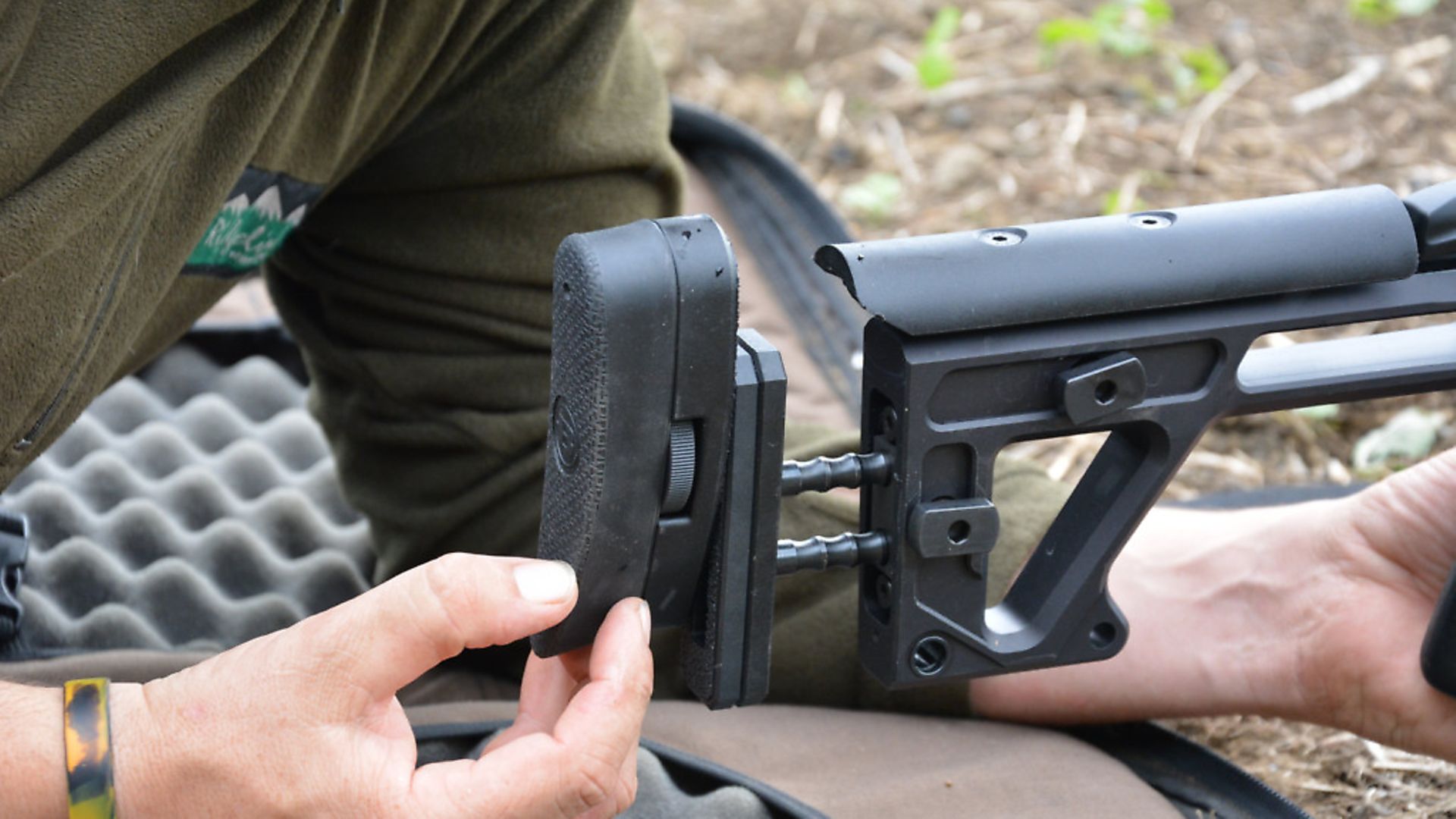 credit: Archant
credit: Archant
I was extremely pleased to be loaned the rifle as a complete package by RUAG, who have no gaps in their portfolio. Kahles optics, Tier-One scope mounting accessories and the Hausken sound moderator were worthy additions along with premium Norma 6.5 Creedmoor ammo. The actual bullet looked very similar to a Berger to me, with a tight match meplat on a secant ogive. The packet showed data suited for ballpark trajectory solutions as far as 300m with an indicated muzzle velocity of 869m/s, but I wanted to go beyond that. I assumed a ballistic coefficient somewhere in the mid 0.6s for the 130gr pill that showed a muzzle velocity hovering between 865-870m/s (2,847 fps), so bang on the manufacturer’s estimate. I wasn’t far off in the end with consistent hits at 628m using 4.1 mils (41 clicks) wound onto the optic.
The Hausken sound moderator was superb. Weighing in at 310g with an overall length of 224mm (overhanging the barrel by 70mm), it may not have the slimmest profile with its 47mm waistline, but it is extremely effective for noise suppression. The recoil and blast from the Creedmoor is not huge, but I was taking a lot of photographs less than a metre from the muzzle while it was being fired, both at right angles and safely in front, and never felt uncomfortable; yes, I was wearing ear defenders, but even so, this is a superb mod with no determinable shockwave.
My one concern with the gun is the way the action fits into the chassis. I have been a devotee of bedding rifles for a long time, as very little effort put into the interaction between stock and action can pay huge dividends. Like the action, the stock is machined with a delicacy to it that makes it great to use in the field, but the V groove principle for sighting the action is flawed when the tang remains afloat.
 credit: Archant
credit: Archant
Two significant marks show abreast the front action screw to witness where the action is bearing down into the chassis, but at the rear there is no solid contact between the action and chassis; so, what exactly are you tensioning your action screw against?
The gun shot very well on both paper and targets out to 630m, but I did have a little play with bolt tension at the rear and had to find a sweet spot because the initial test on paper showed some vertical stringing; I noted the applied torque very carefully in case I had to separate the setup and return to approximate zero – which a fully bedded rifle will!
Bergara seem to have the machining standards in place, and a few thou tolerance may be insurmountable, but I’d rather not slacken off the front action screw to find the barrel lift a full quarter inch free of the stock when it should be utterly stationary.
This is in stark contrast to the Browning X-Bolt Macmillan sporting rifle, where a small but well-placed blob of epoxy bedding compound helped out a lesser stock than this one. Were the rifle mine, I’d add that blob of Devcon or similar to it for a little more assured performance… but that is all!
It’s a bloody good gun and I think it sits at the top table with only one other rifle in the chassis rifle surge we are seeing in this price range. I’m cautious of the fact that this Creedmoor has inherently better recoil manners and ballistic capability than the .308s I have tried elsewhere, but several chassis rifles were less than pleasant to shoot and this one was not only pleasant but was a real joy to use.
Thanks to that, this is the test rifle I have used the most, because I wanted to keep shooting it, not because I had to.
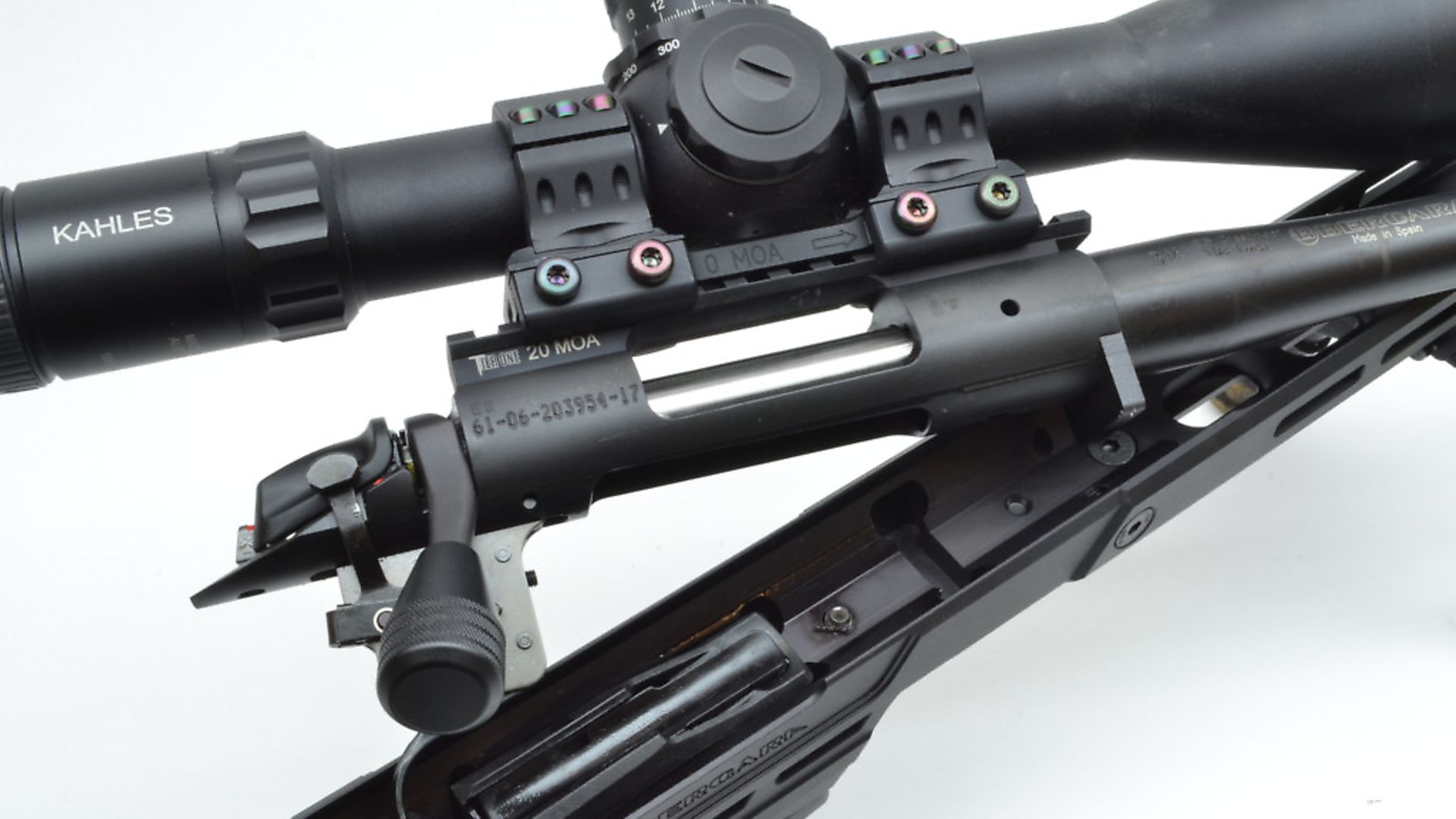 credit: Archant
credit: Archant
 credit: Archant
credit: Archant
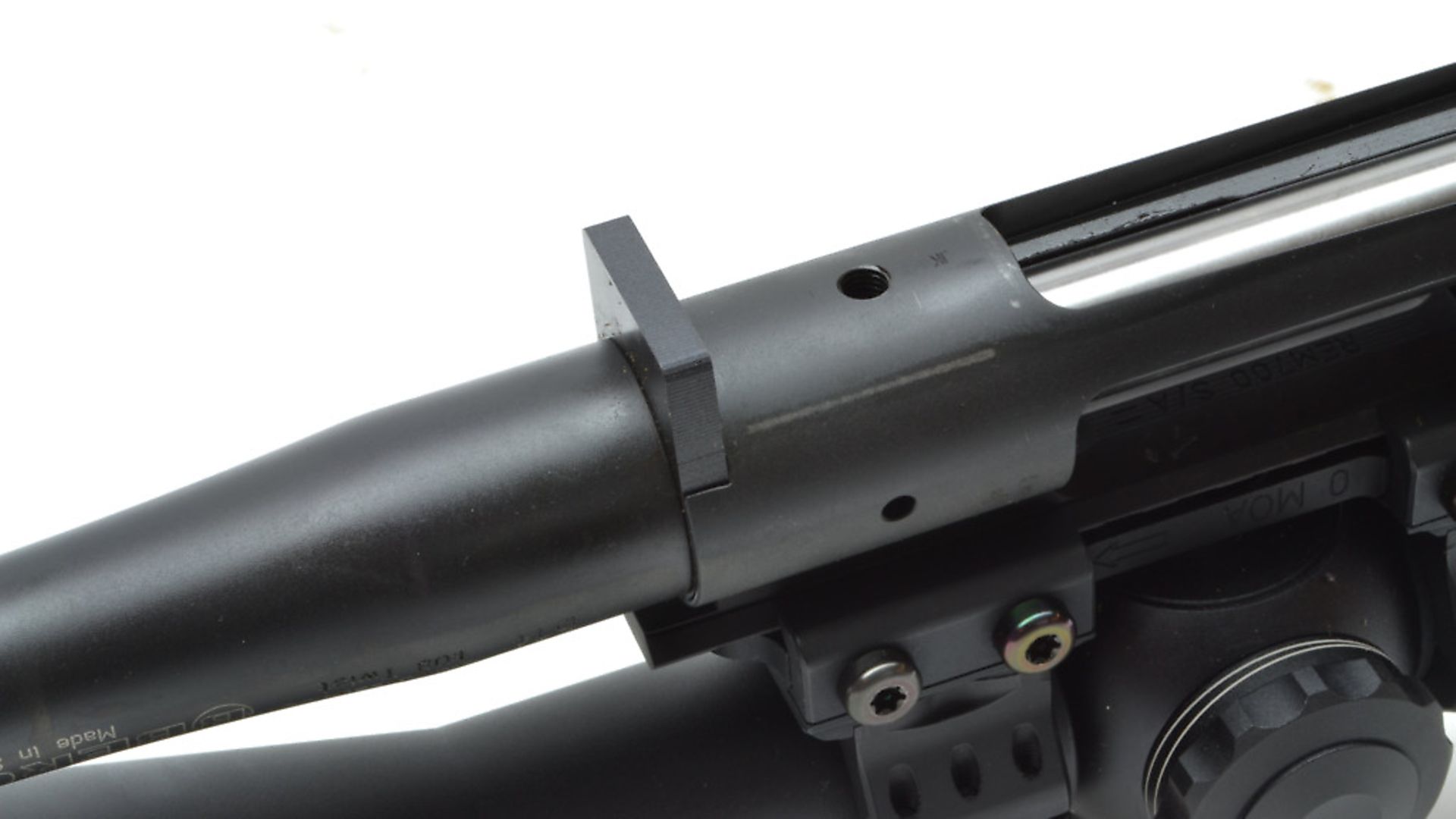 credit: Archant
credit: Archant
 credit: Archant
credit: Archant
 credit: Archant
credit: Archant
 credit: Archant
credit: Archant